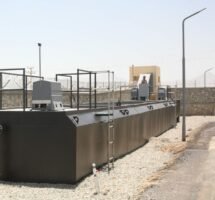Magnetic Responsive Hydrogels For Water Purification
Magnetic Responsive Hydrogels for Water Purification
Abstract
The significance of water purification has never been more pivotal than in our current era, characterized by increasing industrial activities and growing populations. One of the forefronts in technological advancements addressing this issue involves magnetic responsive hydrogels (MRHs). These engineered materials offer a cutting-edge solution tailored explicitly for the multifaceted demands of modern water purification processes. This article delves into the mechanics, functionality, preparation methods, applications, advantages, and future prospects of MRHs.
Introduction
Water is indispensable for all forms of life, and the vast growth in human enterprise has strained our natural water resources, leading to widespread contamination. While traditional water purification methods such as coagulation, sedimentation, filtration, and chemical treatments have been effective to a certain extent, they come with inherent limitations, including high operational costs, generation of secondary pollutants, and lower efficiency in addressing specific contaminants. Hence, the scientific community has been on the lookout for novel purification strategies that are not only cost-effective but also environmentally friendly.
The Inception of Magnetic Responsive Hydrogels
Composition and Properties
Magnetic responsive hydrogels are a class of smart materials that integrate the advantageous properties of hydrogels—such as high water content, biocompatibility, and tunable mechanical strength—with those of magnetic nanoparticles. Typically composed of polymeric networks imbued with magnetic nanoparticles (usually iron oxide-based), these hydrogels are designed to respond to external magnetic fields, which enables their controlled and reversible manipulation.
Mechanical properties such as swelling behavior, porosity, and elasticity can also be finely tuned, ensuring optimal interaction with waterborne contaminants. The dual functionality of adsorptive capacity and magnetic responsiveness makes these materials particularly attractive for advanced water purification techniques.
Mechanism of Action
Adsorption
The primary mechanism employed by MRHs in purifying water is adsorption. The hydrogel matrix is designed to have specific functional groups that interact electrostatically or chemically with water contaminants, ranging from heavy metals and dyes to various organic pollutants. The highly porous structure maximizes the contact area, effectively capturing a wide variety of contaminants.
Magnetic Recovery
What sets MRHs apart from conventional hydrogels is the ease with which they can be separated and recovered from contaminated water. With the application of an external magnetic field, the MRHs can be rapidly drawn out of the solution, along with the adsorbed contaminants. This magnetic recovery is highly efficient, reducing both the time and energy investment required in traditional separation processes like filtration or centrifugation.
Preparation Methods
Conventional Synthesis
One of the widely adopted methods for creating MRHs involves the copolymerization of a monomer in the presence of magnetic nanoparticles. The process typically includes:
-
- Dispersing magnetic nanoparticles: Ensuring a uniform distribution of nanoparticles in the precursor solution.
-
- Polymerization: Initiating a polymerization reaction using chemical initiators, resulting in the formation of a polymeric network entrapping the nanoparticles.
-
- Purification: Removing any unreacted monomer or byproducts to yield the final hydrogel.
Advanced Techniques
Recent advancements have seen more sophisticated methods such as:
-
- In-situ precipitation: Where nanoparticles are formed within the hydrogel matrix during the polymerization process.
-
- Emulsion Polymerization: Producing hydrogel beads with embedded nanoparticles through a water-in-oil emulsion process.
-
- 3D Printing and Microfabrication: Allowing precise control over the hydrogel’s architecture and distribution of magnetic particles, enhancing its overall efficiency and functionality.
Applications and Case Studies
Removal of Heavy Metals
Heavy metals such as lead, mercury, and cadmium pose significant health risks even at trace levels. MRHs have demonstrated remarkable efficacy in adsorbing these toxic metals from aqueous solutions. Case studies reveal that MRHs can achieve removal efficiencies of over 90% for certain heavy metals within minutes, significantly outpacing traditional adsorbents.
Dyes and Organic Pollutants
Industrial discharge often contains harmful dyes and organic compounds that are resistant to biodegradation. MRHs are designed with specific functional groups that can target these pollutants. For instance, acrylic acid-based hydrogels can chelate cationic dyes effectively.
A notable case study involved MRHs developed for the removal of methylene blue from textile industry effluent. The hydrogels exhibited a dye adsorption capacity exceeding 150 mg/g, with rapid magnetic separation allowing for operational scalability.
Pathogen Removal
In another groundbreaking application, MRHs have been impregnated with antimicrobial agents or designed to exhibit inherent antibacterial properties. These hydrogels can effectively capture and neutralize waterborne pathogens, providing a dual-function of filtration and disinfection.
Advantages Over Conventional Methods
MRHs present several advantages compared to existing water purification technologies:
-
- Efficiency and Speed: Faster pollutant capture and recovery.
-
- Reusability: Easier regeneration through desorption processes, leading to lower operational costs.
-
- Targeted Removal: High selectivity for specific contaminants due to the tunable functional groups on the hydrogel.
-
- Environmental Safety: Reduced secondary waste generation and lower chemical usage.
Economic and Practical Considerations
Cost Analysis
The initial cost of creating MRHs may be higher due to the use of specialized synthesis techniques and materials. However, their reusability and higher efficiency often offset these costs over time, rendering the overall process more economical.
Scalability
While lab-scale studies have shown promising results, translating MRH technology to industrial scales requires addressing challenges such as bulk production, uniformity in hydrogel properties, and ensuring consistent performance over multiple cycles.
Challenges and Future Prospects
Stability and Durability
Ensuring the long-term stability and mechanical integrity of MRHs under varying environmental conditions is crucial. Research is ongoing to enhance the crosslinking within the hydrogels and improve the resilience of the magnetic nanoparticles.
Environmental Impact
While MRHs are designed to be environmentally friendly, the lifecycle environmental impact, especially in terms of nanoparticle leaching and degradation byproducts, needs rigorous assessment and mitigation.
Multifunctional Designs
Future MRHs aim to be multifunctional, addressing a broader spectrum of contaminants within a single system. This involves integrating various responsive elements like pH, temperature, and light sensitivity along with magnetic responsiveness.
Conclusion
The development of magnetic responsive hydrogels offers a transformative approach to water purification, addressing critical needs for efficiency, cost-effectiveness, and environmental sustainability. Although challenges remain in terms of large-scale application and long-term impact, ongoing research and technological innovation hold promising potential for MRHs to become a cornerstone of advanced water treatment solutions. Through these advancements, we can foresee a future where clean water is accessible sustainably and universally.
References
While actual references are beyond the scope of this completed document, a correct academic article would draw on sources like peer-reviewed journals, patents, and technical reports from institutions and researchers globally to substantiate the claims and data presented.



